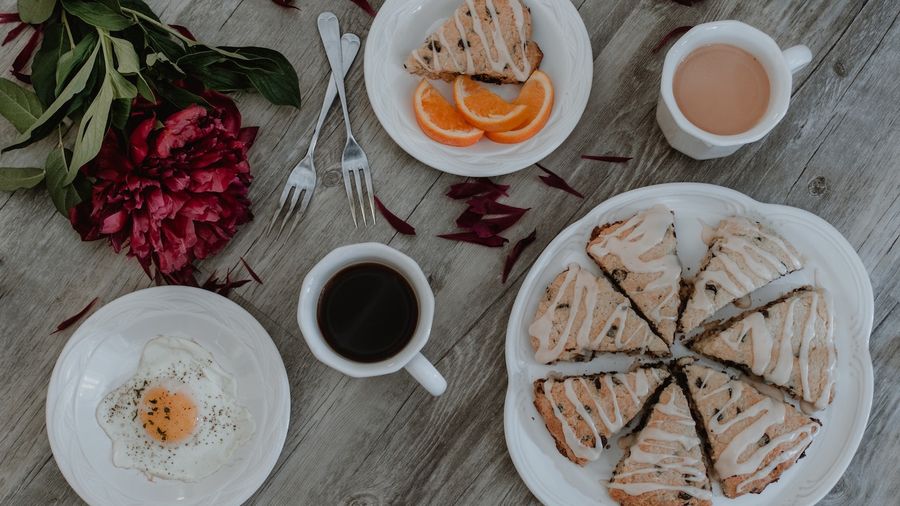· tea parties · 3 min read
Overview of a British Tea Party
Over time, tea parties became a popular social event in British culture, often accompanied by a variety of delightful foods and sweets.

History
A traditional afternoon tea has three courses:
- Finger Sandwiches
- Scones
- Sweets
Finger Sandwiches
Finger sandwiches are an essential part of British tea parties. They consist of thinly sliced bread with various fillings, including cucumber and cream cheese, smoked salmon, egg salad, and ham with mustard. The crusts are typically removed, and the sandwiches are cut into small, bite-sized pieces.
Fun Fact
One of the most popular types of finger sandwiches are cucumber sandwiches.
Cucumber sandwiches have been a tea party staple for centuries. They consist of thinly sliced cucumbers placed between slices of buttered bread. The refreshing crunch of the cucumber pairs well with the creaminess of the butter.
Scones
Scones are a quintessential tea party treat. They are small, lightly sweetened baked goods that are often served with clotted cream and jam. Scones can be plain or flavored with ingredients like raisins or currants. They are best enjoyed warm and freshly baked.
Fun Fact
There is a debate concerning which goes on the scone first, jam or clotted cream. People in Coernwall England prefer jam first and then clotted cream (the Cornish method), while people in Devon England prefer clotted cream first and then jam (the Devonshire method).
Sweets
Here are some popular traditional British sweets.
Victoria Sponge Cake
Named after Queen Victoria, this classic sponge cake consists of two layers of sponge cake sandwiched together with raspberry jam and whipped cream. The top is typically dusted with powdered sugar. It’s a light and fluffy cake that pairs perfectly with a cup of tea.
Battenberg Cake
Battenberg cake is a unique and visually striking cake made of two different-colored sponge cakes that are cut into long strips and arranged in a checkered pattern. The cakes are then held together with apricot jam and covered in marzipan. Battenberg cake has a marzipan outer layer and a moist, almond-flavored interior.
Eccles Cakes
Eccles cakes are sweet pastries that originated in the town of Eccles in Greater Manchester, England. They are made by wrapping a flaky pastry around a filling of currants, butter, and sugar, which gives them a rich, sweet flavor. Eccles cakes are typically served warm and dusted with powdered sugar.
Shortbread
Shortbread is a traditional Scottish biscuit that has become a popular addition to British tea parties. It’s a buttery and crumbly biscuit made from simple ingredients such as butter, sugar, and flour. Shortbread can be served plain or with added flavors like chocolate chips or lemon zest.
Lemon Drizzle Cake
Lemon drizzle cake is a moist and tangy cake made with lemon zest and juice. It has a dense texture and is topped with a zesty lemon glaze that seeps into the cake, giving it a deliciously sweet and tangy flavor.
Macarons
While macarons have French origins, they have become a beloved treat at British tea parties. Macarons are delicate meringue-based cookies with a crisp shell and a soft, chewy interior. They come in various flavors and colors, such as raspberry, pistachio, or salted caramel.
Tea Loaf
Tea loaf, also known as fruit loaf or bara brith in Wales, is a dense and moist fruit cake made with dried fruits like raisins, currants, and candied peel. It’s often soaked in tea overnight to enhance its flavor. Tea loaf is typically sliced and served with butter.
These are just a few examples of the delightful foods and sweets typically found at traditional British tea parties. Each item carries a sense of history and tradition, making tea parties a cherished aspect of British culture.